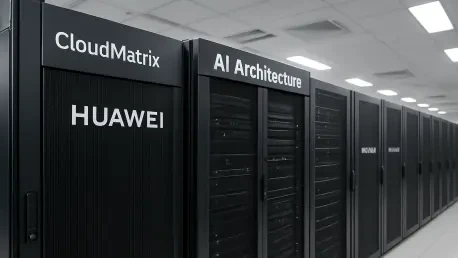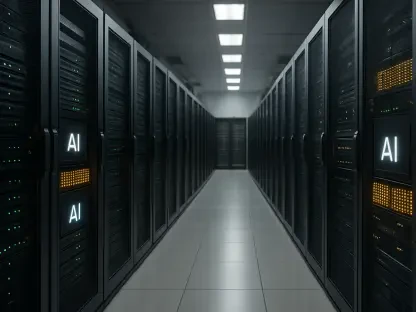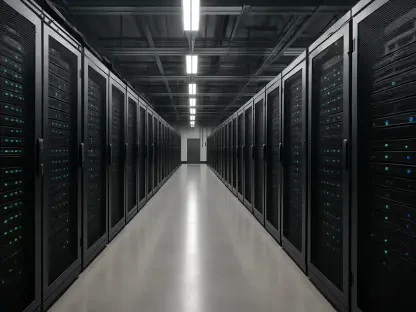As Huawei seeks to assert dominance in the rapidly evolving AI sector, its CloudMatrix AI architecture emerges as a key player amid global tech rivalry, offering purported advancements that might redefine the landscape. Amid escalating U.S.-China technology tensions, Huawei’s claim that its AI architecture surpasses competitor Nvidia’s graphic processing units (GPUs) sparks discussions within geopolitical and technological realms. Understanding Huawei’s technological assertions provides insights into potential shifts in AI infrastructure foundations that could shape industry directions and strategies.
Technological Advancements and Performance Claims
Evolution of Huawei’s CloudMatrix AI Architecture
Huawei’s journey in developing its CloudMatrix AI architecture marks significant strides in advancing AI technology, reflecting the company’s ambition to lead the market. Beginning as a challenger to established systems, Huawei’s latest release—CloudMatrix384—shows accelerated growth, adoption, and performance. Drawing attention to its computing efficiency metrics and architectural innovations positioned against Nvidia’s GPUs, the narrative showcases Huawei’s aspirations in redefining AI efficiency and infrastructure capabilities. From the employment of Ascend and Kunpeng processing units to a sophisticated low-latency Unified Bus for peer-to-peer communication, Huawei’s architecture presents itself as a formidable alternative to current industry standards.
Real-World Applications and Case Studies
The deployment of CloudMatrix AI architecture finds tangible applications within AI data centers, as seen through various real-world scenarios. CloudMatrix384 serves a critical role in executing complex AI models within data centers focused on large language models, demonstrating its utility and operational superiority. Notable case studies exhibiting CloudMatrix architecture in action underscore its implementation across AI-driven sectors, effectively showcasing its prowess in managing demanding processes integral to AI operations. Whether enhancing mixture-of-experts models or optimizing resource allocation, Huawei’s architecture becomes a turning point in AI data center advancements.
Insights from Industry Experts
Industry experts offer varied insights regarding Huawei’s claims, with tech leaders weighing strategic implications amid the shifting geopolitical landscape. Analysts recognize Huawei’s aggressive stride towards achieving technological competitiveness, notably reflected in its claims to outperform Nvidia’s GPUs. However, endorsements and critiques thrive as the conversation spans beyond technological paradigms, deliberating Huawei’s strategic posturing amid U.S.-China tech disagreements. The discussion reveals complexities where Huawei asserts that resources and architectural innovations might compensate for lagging behind technologically leading competitors, fostering an environment ripe for debate and scrutiny.
Future Prospects and Industry Implications
Exploration of CloudMatrix AI architecture’s future unveils considerations for its role in shaping AI-driven technological paths. Huawei envisions continual advancements within CloudMatrix infrastructure, potentially influencing industry norms by adopting innovative AI operational frameworks. The architecture allows for scalability enhancements and efficiency optimizations, promising a transformative impact on AI capabilities globally. While Huawei’s claims raise questions of verification and credibility, the narrative unveils scenarios where the AI sector adapts amid geopolitical intricacies, prompting broader reflections on technology’s future trajectory.
Conclusion and Forward-Looking Perspectives
In retrospect, Huawei’s CloudMatrix AI architecture positions itself as a pivotal aspect in challenging industry giants like Nvidia, sparking discussions on competitive dynamics and technological evolution within AI infrastructure domains. Despite Huawei’s assertions, the debate over performance validations persists, emphasizing the necessity for independent endorsements. As Huawei extrapolates upon strategic narratives within the AI sector, considerations turn toward validating these claims through third-party analyses, further shaping AI endpoints and operational strategies. Ultimately, Huawei’s initiatives propel tactical discourse within a rapidly shifting tech landscape where innovation, competition, and geopolitical influences intertwine.









